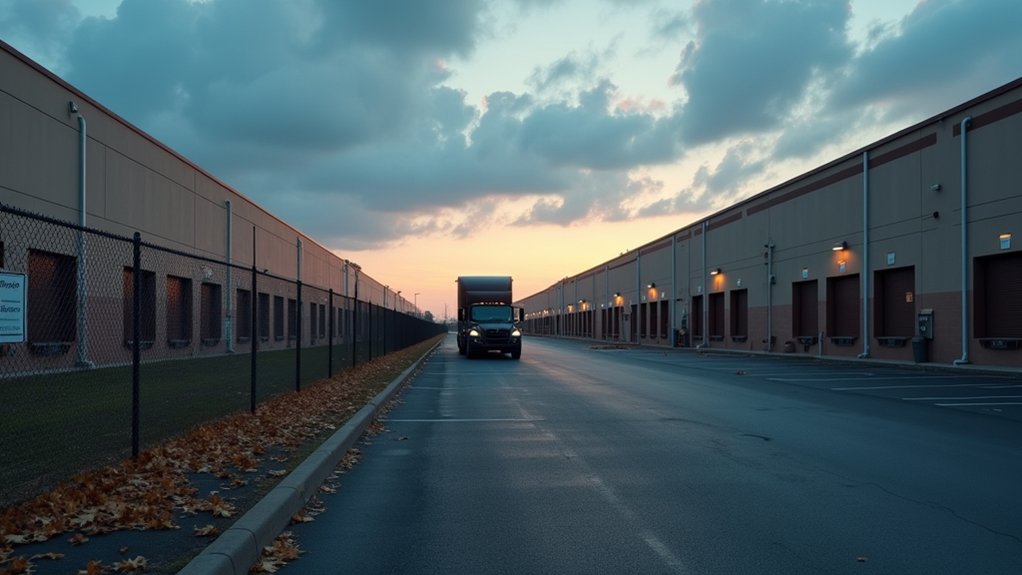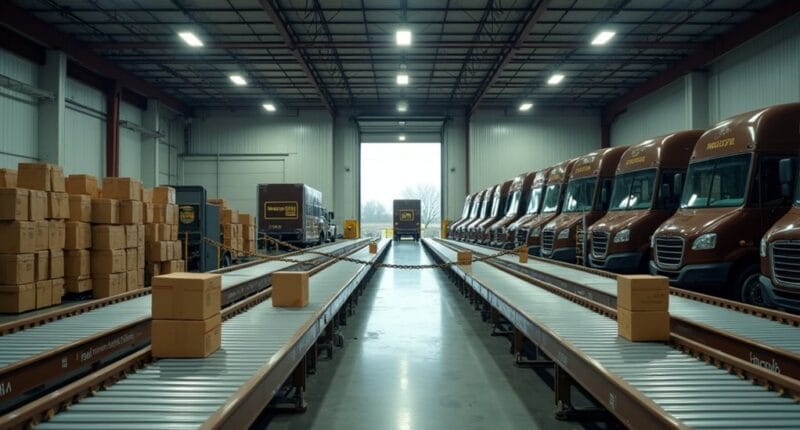UPS is slashing 20,000 jobs and shuttering 73 facilities by mid-2025, as Amazon, its biggest customer, plans to cut shipping volume by more than half. The logistics giant, facing a major shake-up in the e-commerce landscape, expects to save $3.5 billion from this painful restructuring. Despite the grim news, first-quarter profits rose 7.2% to $1.2 billion. There’s more to this story than just numbers and facilities going dark.

UPS is slashing 20,000 jobs and shuttering 73 facilities by mid-2025, marking a dramatic overhaul of its operations as Amazon – its biggest customer – pulls back shipments. The cuts represent about 4% of UPS‘s 490,000-strong workforce and follow an earlier purge of 12,000 management positions announced in early 2024. Talk about a rough year for the delivery giant.
The company’s relationship with Amazon is crumbling fast. The e-commerce behemoth, which currently makes up 11.8% of UPS’s total revenue, plans to slash its shipping volume by more than half by mid-2026. Seems like Amazon’s “thanks for the memories” moment is hitting UPS where it hurts.
Despite the upheaval, UPS isn’t exactly crying poverty. First-quarter profits actually rose 7.2% to $1.2 billion, though revenues dipped slightly to $21.5 billion. The company expects to save a whopping $3.5 billion in 2025 through its network reconfiguration. That’s a lot of penny-pinching. The company reported adjusted earnings of $1.49 per share, beating analyst expectations.
CEO Carol Tomé is putting on a brave face, promising a “stronger, more nimble” UPS will emerge from this restructuring. The market uncertainty remains a significant challenge for the company’s outlook. The company’s stock even ticked up 1% after the announcement – apparently, Wall Street loves a good cost-cutting story.
The facility closures aren’t just about Amazon, though. UPS is using this as an opportunity to trim the fat from its operations, targeting redundant facilities and unprofitable routes. Investors watching the situation closely are advised to maintain a diversified portfolio to manage risk during this volatile period.
And there might be more cuts coming – the company hasn’t ruled out additional facility closures beyond the initial 73.
For the logistics industry’s top dog (UPS ranks No. 1 among North America’s for-hire carriers), this restructuring represents more than just a response to losing Amazon’s business. It’s a stark reminder that even the biggest players need to adapt or get left behind in today’s shifting e-commerce landscape.
Let’s just hope those 20,000 soon-to-be-former employees land on their feet.





